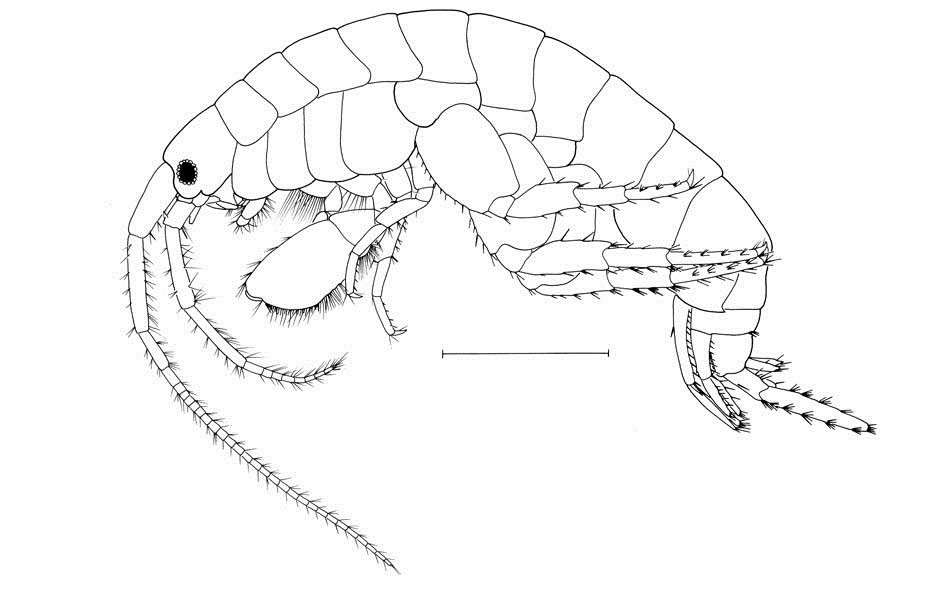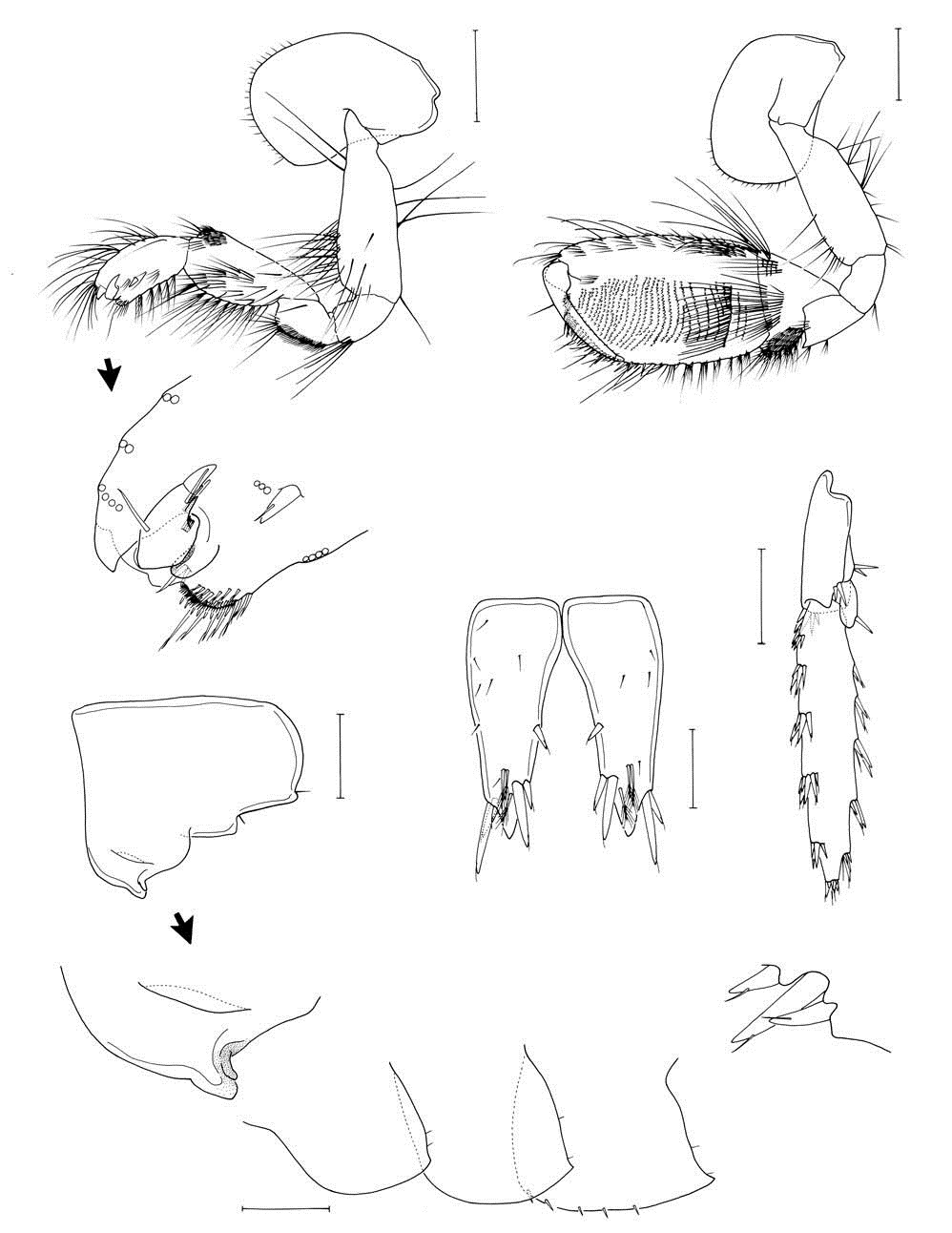



The genus
Before this study, three species from the genus
Our specimens were collected from the Yellow Sea, Korea,between 2008 and 2009. The specimens were preserved in 95% ethanol. Dissection and mounting was conducted according to the methodology of Barnard and Karaman (1991). All specimens examined here were deposited in the Marine Arthropod Depository Bank of Korea (MADBK), Seoul National University.
Order Amphipoda Latreille, 1816
Family Melitidae Bousfield, 1973
Genus Melita Leach, 1814
1*
Materials examined. Korea: 1♂, 1♀, Incheon, Ongjin-gun,Yeongheung-myeon, Seonjae-do, 9 May 2008; 9♂♂, 3♀♀,immature 8, Gyeonggi-do, Hwaseong-si, Seosin-myeon,Jebu-do, 2 Oct 2008; 8♂♂, 8♀♀, immature 3, Hwaseongsi,Seosin-myeon, Jebu-do, 28 Nov 2008; 5♂♂, Incheon, Ongjin-gun, Yeongheung-myeon, Seonjae-do, 5 Aug 2009.
Description. Male: Body (Fig. 1) 9.4 mm long (from the tip of rostrum to posterior end of urosomite 3), compressed.Eye black. Dorsal part of pleosomites 1-3, urosomite 1 and 3 smooth. Epimeron 1 subrounded ventrodistally; epimeron 2 having small ventrodistal tooth; epimeron 3 slightly extended posteriorly and forming distinct tooth (Fig. 2A). Urosomite 2 (Fig. 2B) with 3 spines on both sides in dorsal view.
Basis of gnathopod 1 (Fig. 2C) bearing rows of numerous long setae along anterodistal margin; ischium slightly shorter than merus; carpus 2 times as long as merus with patches of setae on inner surface, posterior margin and anterodistal
lobe, posterior margin convex; propodus with 1 spine on inner surface, anterodistal lobe triangular; excavation of propodus narrow, posterior part produced humplike; dactylus hook-shaped.
Basis of gnathopod 2 (Fig. 2D) 2.6 times as long as ischium; merus having pointed posterodistal lobe; carpus with rounded posterior margin and rows of setae on inner surface;propodus expanded and broadest in middle part, bearing rows of setae on anterior and posterior margins, inner surface covered with many rows of setae; palm bearing densely aggregated small spines; dactylus strong.
Peduncle of uropod 3 (Fig. 2E) about 0.5 times as long as outer ramus; outer ramus uni-articulate, slender; inner ramus scale-like with 1 spine.
Telson (Fig. 2F) with each lobe, bearing one pair of spines laterally and medially on distal margin, and 1 medial spine on inner margin.
Female: Body 6.4 mm long, slightly smaller than that of male. Anterior lobe of coxa 6 (Fig. 2G) extended posteriorly,its apex bearing 1 small hump, basal part with slit-like shallow pocket and swollen projection.
Distribution. Korea (current study) and Japan.3
Remarks.
The morphological features of our specimens coincide with those of Yamato’s original description, except for two characteristics: There are three dorsal surface spines on the urosomite 2 in our specimens, whereas there are four in the original description. And, dorsal margin of article 3 in the mandible palp possesses several setae in our specimens, while Yamato’s specimens bear only one seta. These differ-
ences are considered to be due to the different size between Yamato’s type specimens and our sample. In male, our specimen is larger than the Yamato’s type specimens.

